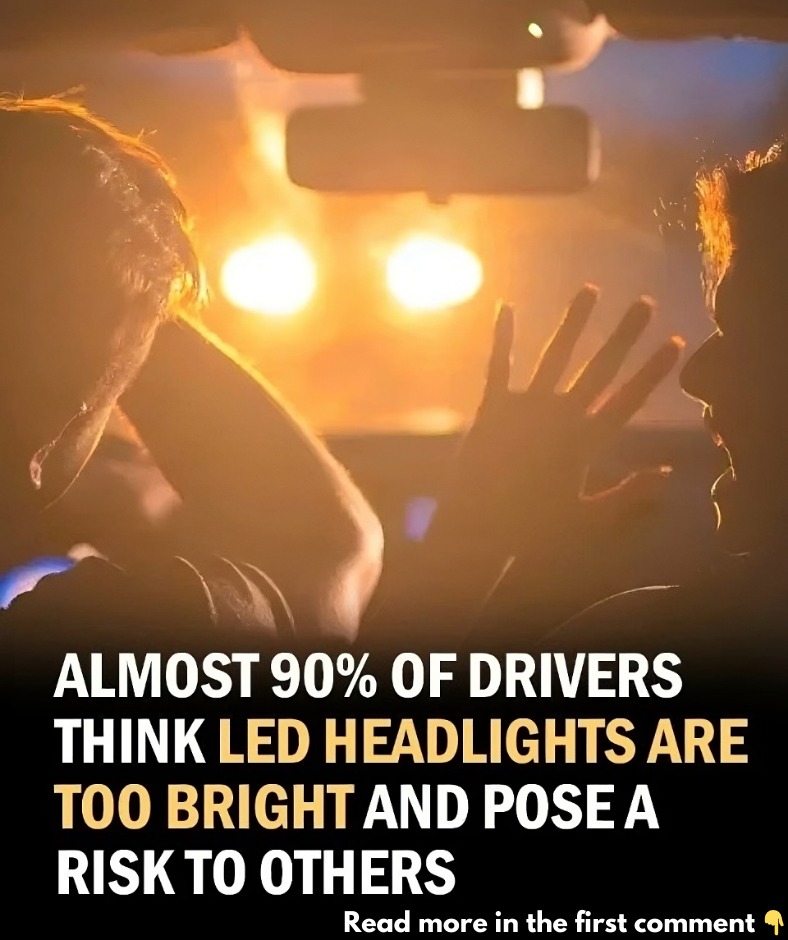In recent years, LED headlights have transformed the automotive industry, offering drivers unmatched illumination and energy efficiency. Initially celebrated as a groundbreaking innovation, these lights are now under scrutiny for their unintended consequences. Many drivers worldwide have voiced concerns that LED headlights are excessively bright, causing discomfort and raising safety issues during nighttime driving. This article explores the root causes of these complaints, their global impact, and the potential solutions to balance visibility with comfort.

Why Are Drivers Complaining?
While LED headlights undoubtedly improve visibility for drivers, their intense beams often come with a significant downside. A survey conducted by the RAC in the UK found that 89% of drivers believe LED headlights are too bright, with 85% stating that the glare has worsened over time.
The issue isn’t limited to the UK. In the United States, similar complaints abound. Victor Morgan, a mechanical engineer, conducted independent studies revealing that real-world glare levels from LED headlights frequently exceed regulatory limits. What began as a technological breakthrough has become a source of frustration and safety concerns for many drivers.
The Pros and Cons of LED Technology
LED headlights were initially praised for their many advantages:
- Improved Visibility: Their sharp, focused beams allow drivers to see farther and more clearly at night, reducing the likelihood of accidents.
- Energy Efficiency: Compared to traditional halogen bulbs, LEDs consume significantly less power, making them an eco-friendly option.
- Durability: LED headlights often outlast conventional bulbs, saving drivers money on replacements over time.
However, these benefits come with a cost. The concentrated brightness of LEDs can temporarily blind oncoming drivers, particularly on unlit roads. This unintended side effect has led to increasing calls for action to address the problem.
Misaligned Headlights: The Hidden Culprit
One of the primary contributors to the glare issue is misaligned headlights. According to Mark Rea from the Light and Health Research Center, improperly adjusted headlights—especially on taller vehicles like SUVs and trucks—exacerbate the glare experienced by drivers in smaller cars.
“It’s not every car,” Rea explains, “but about 20% of vehicles have glaring issues.” Misalignment doesn’t just cause discomfort; it can also increase the risk of accidents by reducing focus and reaction times for other drivers.
The Real-World Effects of Excessive Brightness
Drivers facing overly bright headlights report several challenges that impact their safety and comfort on the road:
- Slower Reaction Times: Many drivers reduce their speed to cope with the glare, particularly on poorly lit roads. This adjustment can lead to longer travel times and increased accident risks.
- Reliance on Night Driving Glasses: Some drivers resort to purchasing specialized glasses designed to reduce glare. While helpful, these glasses address the symptoms rather than the root cause of the problem.
Calls for Regulatory Action
The growing backlash against LED headlights has led experts and advocacy groups to push for stricter regulations. Organizations like the National Highway Traffic Safety Administration (NHTSA) in the U.S. are being urged to revisit their guidelines for headlight brightness, which many argue fail to account for real-world driving conditions.
Mark Baker, president of the Soft Lights Foundation, summarizes the widespread frustration: “Everyone is mystified by why they are being blinded.” Globally, the sentiment is similar, with 64% of UK drivers believing that excessively bright LED headlights increase the risk of accidents.
Potential Solutions for Safer Driving
Several measures can help reduce the glare issue and make roads safer for everyone:
- Adaptive Lighting Technologies:
Advanced systems can adjust the brightness and direction of headlights based on road conditions. For example, adaptive lights can dim when detecting oncoming traffic. While promising, these technologies remain costly and are not yet widely adopted. - Regular Headlight Alignment:
Ensuring headlights are properly aligned can significantly reduce glare for other drivers. Routine maintenance checks are an easy and effective solution for vehicle owners. - Stricter Manufacturing Standards:
Automakers can design headlights with stricter controls on beam angles and brightness levels. Such measures would help strike a balance between safety and comfort for all road users.
What Drivers Can Do Now
While long-term solutions are being implemented, individual drivers can take immediate steps to reduce glare and improve safety:
- Check Headlight Alignment: Misaligned lights, particularly on taller vehicles, can exacerbate glare. Regular adjustments can make a significant difference.
- Use Low Beams Appropriately: Avoid using high beams in well-lit areas or when other vehicles are nearby.
- Avoid Overly Bright Aftermarket Bulbs: Installing unregulated or overly bright LED bulbs can worsen glare for others on the road.
Conclusion: Finding the Right Balance
LED headlights were designed to enhance safety, but their unintended brightness has created new challenges for drivers. Addressing issues like misalignment, adopting adaptive lighting technologies, and revising regulatory standards are crucial steps toward achieving a balance between visibility and driver comfort.
For now, it’s up to all stakeholders—manufacturers, regulators, and drivers—to work together to create glare-free roads. With thoughtful action and collaboration, we can ensure that bright lights illuminate our journeys without compromising safety and comfort for everyone on the road.





